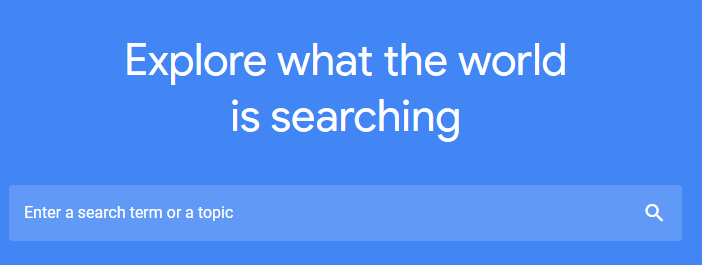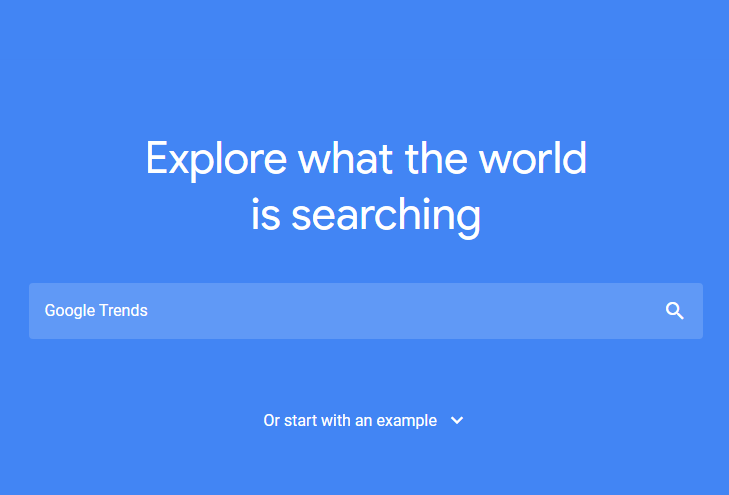Google introduced and announced some changes to Google Ads in 2019. Many of them pointed the way for the future of search engine marketing on Google. We’ll show you the biggest Google Ads Trends 2020 and what Google improved, announced, or eliminated in 2019.

Page Contents
Redesign of the mobile search results pages
In May 2019, Google redesigned the look and feel of Google search results for mobile users. In addition to the slightly new look, users now also see the small favicon (e.g. your brand logo) and your website name more prominently in your search results. This not only gives a nicer picture but also acts as an additional branding and trust element.
In addition, the redesign may prepare for so-called rich cards to make the search even more attractive. We are excited!
New Smart Bidding Strategy: “Maximize Conversion Value”
The topic of smart bidding kept us busy in 2019. These types of bid strategies can be of great help if used correctly.
In the first half of 2019, Google introduced the “maximize conversion value” bid strategy. As the name suggests, this new option helps you increase the overall conversion value of a campaign at the same time a specified budget to maximize.
And in 2020, Google will continue to improve and expand the possibilities for smart bid strategies. In our large blog article about Smart Bidding, we show you what you need to know about integrating smart bidding algorithms.
Set conversion value for devices, target groups, and location
With rules, you can tailor your Google Ads campaigns to your strategy. You usually define the settings beforehand and as soon as the defined value is reached, the rule takes effect. For example, you can use a Keyword to Increase your bid as soon as your display no longer appears on the first page.
In this area, Google has in terms of Conversions improved.
By introducing the three new options in 2019, Google made it possible to assign different values to conversions. For example, you can give users from different regions of different values. So if customers from region X have more customer value for you than customers from region Y, then just usually set it for the conversion value.
The rule can also be used for devices, e.g. for desktop or mobile devices. So it is possible to assign different values to desktop conversions than mobile conversions if you want.
It is of course important to know which customer or which Conversion has the greatest value to you. You can read how to find out the value of your customers in our article on Customer Lifetime Value.
Responsive Search Ads (RSA) and Responsive Display Ads (RDA)
These two new ad formats show that Google is continuing to build machine learning. You create so-called “assets”, such as headings and descriptions, which Google then compiles individually for each search query. The aim is to deliver content that is as suitable as possible for potential customers, based on various data from Google.
Over time, Google then analyzes the data from the dynamically combined ad texts and continues to optimize the composition. However, the basis for this continues to be well-designed and professionally created ad assets.
Combined target groups for search ads
After a combination of target groups in Google Ads for display ads and YouTube ads had been possible for a long time, Google introduced this option for search ads in 2019.
The possibility of addressing target groups, for example through behavior on the website, interests or demographic characteristics, can be an advantage for many companies. You can now combine these target groups for your campaigns in order to reach exactly the right customer.
In this article about target groups, we will show you how you can optimally combine target groups such as in-market audiences or similar audiences.
Advertisements for regular stays in target regions
In addition to the option of using Google Ads to address people who are currently in a Target region, Google has now introduced a slightly more flexible option. Your ads can now also be displayed to users who are regularly in the target region. This can be used to address commuters, for example. The Google Ads documentation offers a little help.
Seasonal adjustments now also for Smart Bidding
Usually, Google’s smart bid strategies recognize seasonal events. Nevertheless, you now have the option of defining the exact time of these events. You simply enter the time period and Google’s algorithm adjusts your bids accordingly.
Another positive aspect: if you have campaign periods that are independent of global seasonal events such as Christmas or Black Friday, you can now integrate these into your Smart Bidding bid strategies!
Local Campaigns – Local online campaigns for offline retailers
In spring 2019, Google introduced a new way to advertise effectively online for brick-and-mortar retail with Local Campaigns.
With this new type of campaign, you can reach customers in the Google search network and display network as well as on YouTube or Google Maps.
The prerequisite for this is that the retailer links a Google My Business account. Then, similar to RSA and RDA campaigns, ad assets must be created, such as images and effective advertising texts.
In our article about Local Ads, we explain exactly how you can use the new campaign type for your local business.
New comparison displays in the test
A tweet from SEMrush caused a stir in November. There, ad extensions for comparing airport car rental companies were seen in the Google search. It is still unclear how far the test will run and when the feature will be available.
So far, Google has implemented similar ad features for flights and hotels. So Google will certainly work on more industry-specific ones in 2020 as well as Ad Extensions work.
Discovery Ads (Beta)
In addition to RSA and RDA, which we brought you closer to above, Google has introduced another very interesting ad type: Discovery Ads. These are not only intended for the Google Discover Feed but also play a role as YouTube Ads or in G-Mail.
Google itself describes the Discovery Ads as “a new way to reach people on Google, exactly when they are ready to discover your products and services.”
A separate Discovery Ad campaign is required for the new Discovery Ads. The contents of the new ad type have special format specifications that are precisely tailored to the new functions of the Discovery Ads and Discovery Carousel Ads. Similar to RSA and RDA campaigns, images and texts are integrated here.
You can read the whole announcement on the Google Blog. We are curious when the beta function will be available for all users in 2020.
Google Ads Lead Form Extensions (Beta)
Towards the end of the year, Google stepped up again and started another beta for ad extensions: Lead Gen Extensions. With the help of this extension, an individually adaptable lead gen form appears for the user below the search result. The new function is optimized for mobile search but can be used for all search ads.
Google has already described the new function in support documentation.












Leave a Comment